When we think of Rosh Hashanah
When we think of Rosh Hashanah, many of us think of the sound of the shofar, a literal blast from the remote past of Judaism, a time when musical instruments were in their infancy. It is a primal sound, heard through the centuries, calling the Jewish people.
A museum curator experiences the shofarot in her collection as a mute collection of objects, forever retired from their ritual purpose. But she also encounters the shofar as many people do at this time of year, as it appears on Rosh Hashanah cards and candy assortments.
Come with me and explore some of the shofarot through the centuries in the collection of YU Museum - actual horns as well as depictions of holiday scenes.
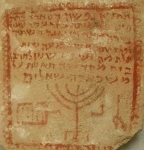
Tombstone of Sa'adah, daughter of Pi[nchas], Zoara, ca. 429 C.E., Gift of Woodland United Fellowship
Our first stop today is this fifth century tombstone on which is painted a shofar, one of the symbols (along with the menorah, lulav, and incense shovel) which identified a person as being a Jew into the sixth century C.E.

Shofar, Altona, 1731, horn, engraved “I, Ephraim, the son of Asher Katz, native of the Holy Community of Altona (?),” The Max Stern Collection
Here we see a typical Ashkenazic or Sephardic shofar, one of the earliest musical instruments invented that is still in use. It is usually made of the horn of a ram or sheep because of the animal’s connection with the Binding of Isaac, the Torah reading for the second day of Rosh Hashanah.
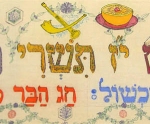
Detail of a Torah binder (wimpel) of Shmuel ben Yaakov (Michael Sam Reinheimer), painted by Rev. Reuben M. Eschwege (1890-1977), New York, 1946, gift of Mr. and Mrs. Michael Reinheimer
From the 16th century in Ashkenazic tradition, Torah binders were created from the swaddling cloth used during a boy’s brit milah, embroidered or painted with a traditional Hebrew phrase, donated to the synagogue and used for the boy’s Bar Mitzvah. In addition to the motifs which commonly decorate wimpels, a Torah and a marriage canopy, many wimpels were decorated with contemporary images. This example, created by cantor, teacher, mohel and artist Reuben Eschwege, includes a shofar as well as a half grapefruit topped with a maraschino cherry. The shofar is paired with a straight horn. Eschwege may have meant this pairing of the straight horn and shofar to refer to the Rosh Hashanah service in the time of the Temple when both were sounded together (Rosh Hashanah 27a).
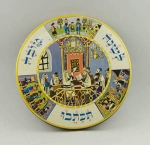
Container for Barton’s chocolates decorated with holiday scenes, designed by Ilya Schor (1904-1951), tin, New York, 1953
In addition to the central scene depicting sounding the shofar in synagogue, artist Ilya Schor depicts Tashlich, Simhat Torah, and Sukkot as he remembered them from the Galician home town of his birth on the lid of this tin which contained an assortment of Barton’s holiday chocolates.
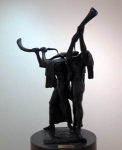
Shofar by Elbert Weinberg (1928-1991), New York, 1969, bronze, gift of Shirley Black in memory of Eli M. Black and in honor of his teacher and friend, Dr. Samuel Belkin
Our last stop for today is sculptor Elbert Weinberg’s moving depiction of men blowing elongated shofarot of the Yemenite type, made from the horn of a kudu (an African antelope) rather than the horn of a ram as we saw in our previous examples.
I hope that you enjoyed this brief dip into the Yeshiva University Museum’s collection, and will join us for future tours.
Bonni-Dara Michaels
Collections Curator
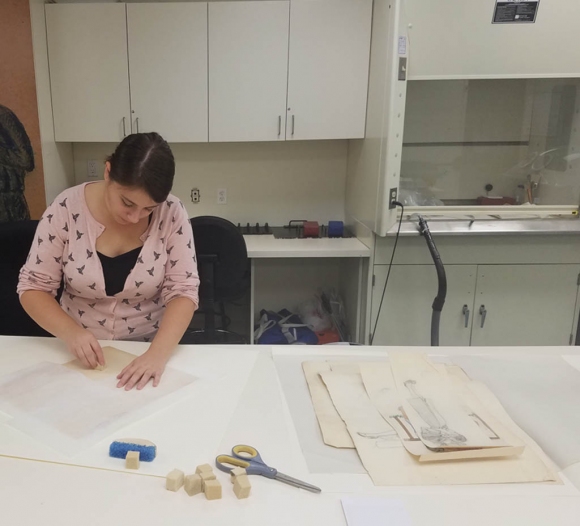
Comments
Share Your Comments: